3 Must See Places in North-West Isle of Skye
Are you wondering what there is to see and do around the north-west Isle of Skye? If so, then keep reading to find out more about 3 must see places when road-tripping around the area.
If you’ve been browsing posts about the Isle of Skye, you’ve probably noticed that a 3-day road trip is possibly one of the best ways to see most of its gems. Since I like to put a little twist on things, instead of your usual 3-day itinerary, I created a 3-part series. This way you’ll find the best detailed itinerary to explore each area of this beautiful place, namely: Central Isle of Skye, North-East Skye (aka the Trotternish Loop) and North-West Skye.
If you’d like to see our road trip around the North-West Isle of Skye then make sure to watch our YouTube video by clicking here. You can also watch our full Isle of Skye Adventures by clicking here.
Disclosure: This post may contain affiliate links, which means we may receive a small commission if you click a link and purchase something. Clicking these links won’t cost you anything, but it will help us to keep this site up and running! Learn more about our affiliate policy.
About the Isle of Skye
The Isle of Skye is the largest island in the Inner Hebrides and the second largest in Scotland after Lewis and Harris. Known for its picturesque harbour with colourful houses, Portree is the island’s capital and largest settlement. Many people therefore base themselves in Portree when touring around the island.
The island’s landscape to the south and central areas is dominated by the stunning Cuillin Range. The main range is called the Black Cuillin whereas the eastern hills are called the Red Cuillin. To the north of Portree is the Trotternish Peninsula. Both areas offer some fantastic walking and hiking routes with the Cuillins alone offering 12 Munros. Munros are mountains in Scotland that are over 3,000 ft (914.4 m). These Munros are part of the ‘Munro bagging’ challenge where climbers try to conquer all 282 Munros.
Skye also has a rich history which is full of Dinosaur Fossils, Clan Wars, Highland Clearances, Bonnie Prince Charlie and the Jacobite Rising. Without digging too deeply into the island’s history, I think it’s worth mentioning the two most powerful clans on Skye: Clan MacLeod and Clan Macdonald that had a long-term feud. The clan system came to an end in the 18th century after the Jacobite risings. This was followed by the Highland Clearances that replaced many communities with sheep farms.
The island’s population has declined with only about 10,000 people living there in 2011. According to the 2001 Census data, approximately one third of Skye’s residents are Gaelic speakers. Whilst their number is declining, it’s still an important part of their culture.
I guess it comes as no surprise that Skye’s leading industries are tourism, agriculture, forestry, and fishing.
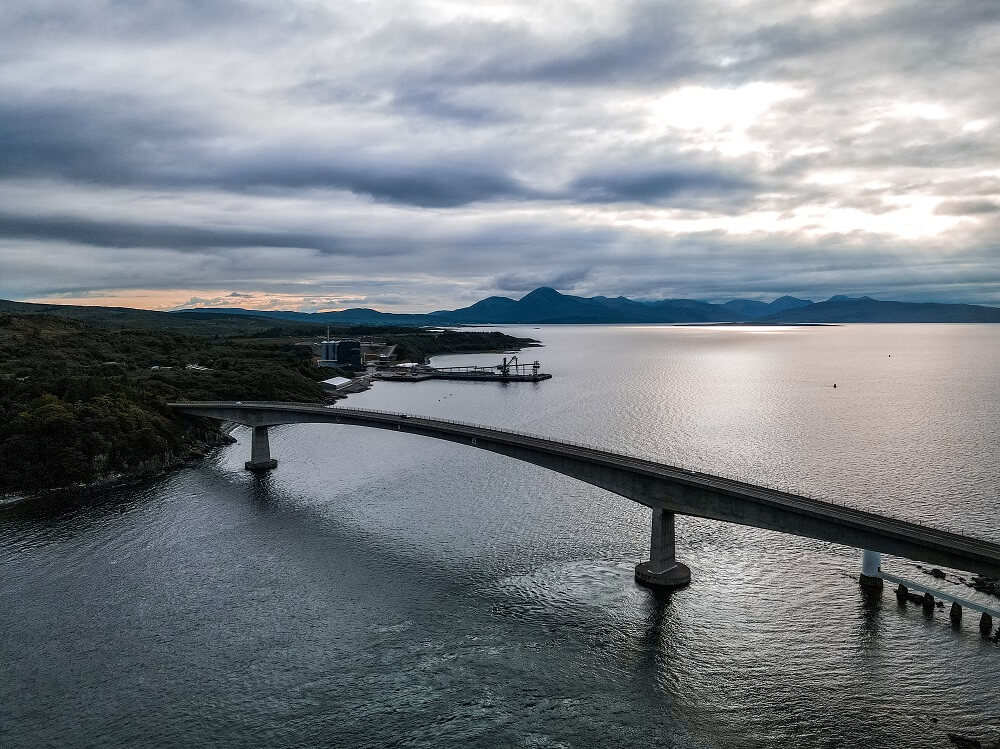
How to Get to the Isle of Skye
By Car
Since 1995 it has been possible to drive to the Isle of Skye from mainland Scotland thanks to the famous road bridge called the Skye Bridge. Until 2004 it operated as a toll road and visitors had to pay approximately £5.70 each way to cross it. When the Scottish Government bought the bridge they removed the tolls, so now you can drive across the bridge for free.
Top Tip – I loved driving across the bridge as it provides you with some stunning views. If you’d like to admire the bridge a bit longer, I recommend you either stop at Kyle of Lochalsh on mainland Scotland or Kyleakin on Skye.
If you don’t have your own car but would like to enjoy the freedom of a private vehicle, then you can always hire a car using this company to get to the Isle of Skye.
By Public Transport
By Bus – You can travel to Portree and Uig by bus from Glasgow or Inverness. You can plan your journey by clicking here. In addition, Stagecoach runs local bus services between villages. You can plan your journey by clicking here.
By Ferry – You can also reach the Isle of Skye by ferry. There are 3 ferry ports on Skye: Armadale, Uig and Sconser. These ferries are run by Calmac and sail to destinations such as Mallaig, Harris, North Uist and Raasay. You can browse for ferries by clicking here.
By Train – If you’re coming from further afield, you can get the train to either Kyle of Lochalsh or Mallaig from where you can take the local bus or ferry. Please note that from Armadale public transport services are less frequent so you might want to reach Kyle of Lochalsh.
3 Places to Visit in North-West Isle of Skye
Below are 3 places you should visit whilst driving around the North-West Isle of Skye. This short itinerary is filled with historical sites combined with beautiful landscapes and views.
For reference, we stayed in Kyle of Lochalsh on mainland Scotland and drove across the Skye Bridge every day. Please be sure to adjust the order of the itinerary according to where you’re staying.
Please Note! – Whatever you bring with you, make sure you either take it home with you or dispose of it responsibly. I suggest bringing a garbage bag with you where you can collect all your waste. Enjoy your time in nature but Leave No Trace!
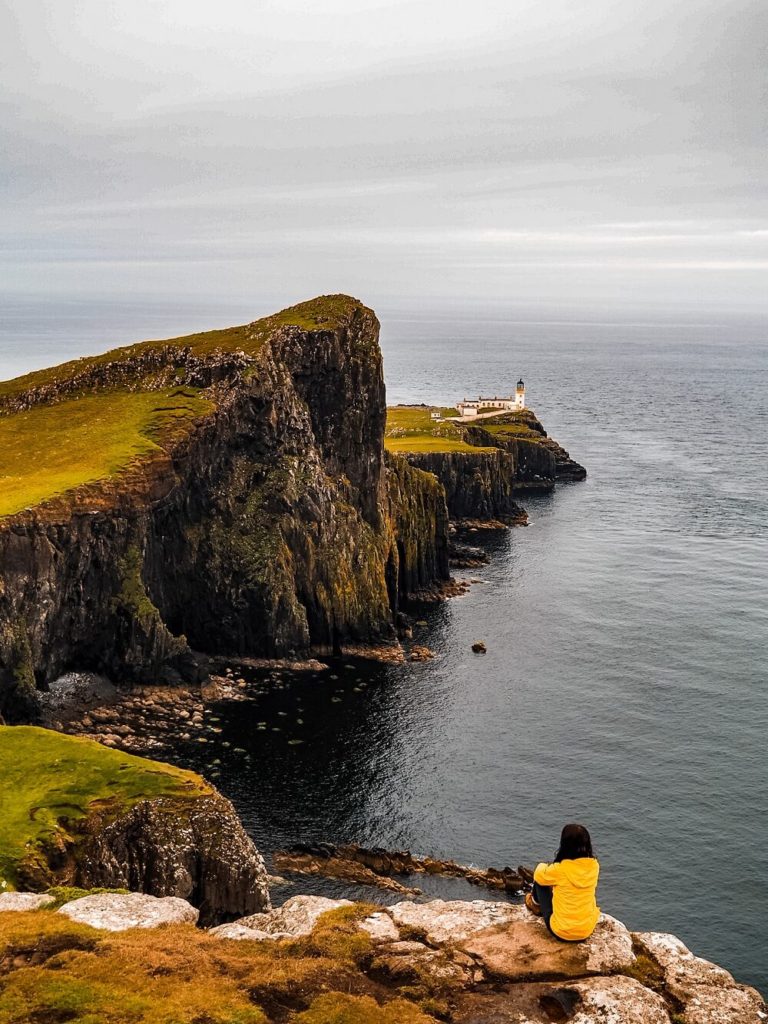
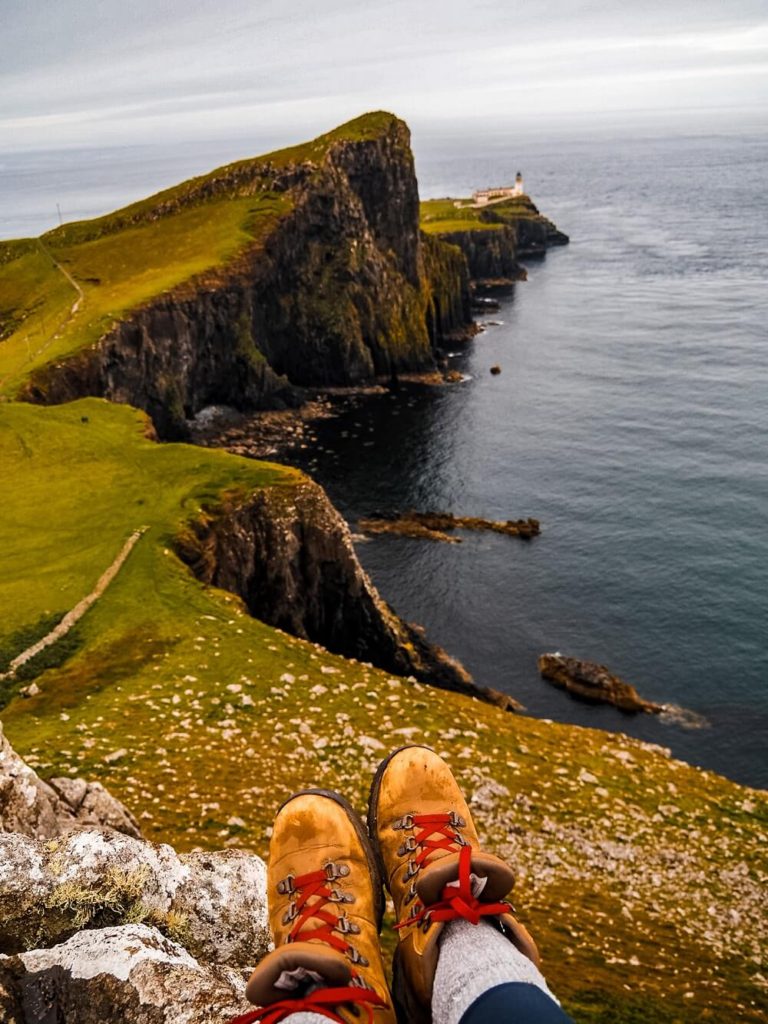
1. Take a Walk Around Neist Point Lighthouse
About Neist Point Lighthouse
When you’re exploring the north-west Isle of Skye you cannot miss visiting the island’s most westerly point: Neist Point on the Duirinish peninsula.
Other than being insanely beautiful, Neist Point also has a picturesque lighthouse called Neist Point Lighthouse. David Alan Stevenson designed the lighthouse and it was first operational in 1909. It used to have keepers who lived in the cottages. The aerial cableway, whose remains can still be seen, was used to transport supplies to the cottages and lighthouse. However, since 1990 it’s been fully automated.
Did you know? – You’ll see an abandoned building at the car park. It was built by the former owner and used as a toll booth to charge visitors to the lighthouse back in 2002. After local campaigns the charges were stopped and the cottages were also sold to its current owner Jane Corfield.
The dramatic landscape has obviously attracted filmmakers over the years. One of the most recent movies that used the headland was 47 Ronin with Keanu Reeves starring in it.
Fun Fact – The basalt rock formations at Neist Point are apparently very similar to the iconic Giant’s Causeway in Northern Ireland.
Top Tip – Neist Point Lighthouse is one of the best places to watch the sunset from. To enjoy the iconic view of the area, make sure to walk to the right from the car park instead of making your way down to the lighthouse.

How to get to Neist Point Lighthouse
Neist Point Lighthouse is located approximately 30 miles to the west of Portree. Unfortunately you can’t get there by public transport, therefore the easiest way to reach it is by car.
You can follow the SatNav towards Neist Point Car Park (Waterstein, Glendale, Isle of Skye IV55 8WT). From Portree follow the A87 to Borve and then take the A850 towards Dunvegan. You can either follow the road all the way to Dunvegan or turn left at the junction towards the A884 and Glendale. Turn left onto an even smaller road off the A884 signposted towards Waterstein. At the end of that road you’ll reach Neist Point Car Park. The drive takes about an hour since you’ll be driving along some very narrow local roads.
Where to park? – You can park your car at Neist Point Car Park (Post Code: IV55 8WT) free of charge.
Facilities – Please note that there are no toilet or other facilities at Neist Point Lighthouse.
Neist Point Lighthouse Point-to-Point Walking Trail
To make the most of your Neist Point Lighthouse visit I recommend completing the 3.3km (2 mile) point-to-point walking trail that leads you all the way to the lighthouse.
From the car park I suggest you first check out the iconic view of the cliffs with the lighthouse sitting at the very edge. To reach this viewpoint, head to the right after walking past the old toll booth building from the car park. It’s only a short walk before the view will be visible and I guarantee that you won’t regret the slight detour.
Please Note – Be very cautious when approaching the edges of the cliffs. I saw some news articles stating that people have fallen off these cliffs before because they walked too close to the edge.
Once you’re ready to see the lighthouse up close, retrace your steps and start your descent along the paved path. Whilst the path is clear and easy to follow, it can be very steep and slippery. There’s a handrail for the most part but I suggest you wear supportive and comfortable shoes. Also, if the weather conditions aren’t great it’s best not to attempt this walk as the trail is exposed.
Once you’ve reached the lighthouse, you can just wonder around and explore its grounds. Just a little warning, there are some sheep grazing in the area. Based on the smell and the amount of droppings they most likely sleep and find shelter around the lighthouse.
Did you know? – Other than a stunning sunset spot, Neist Point is also known to be one of the best areas to spot dolphins and Minke whales, so pack some binoculars or a great camera lens.
Once you’re ready to leave just walk all the way back up to the car park. The way up will be pretty steep so just take your time and keep admiring the views.
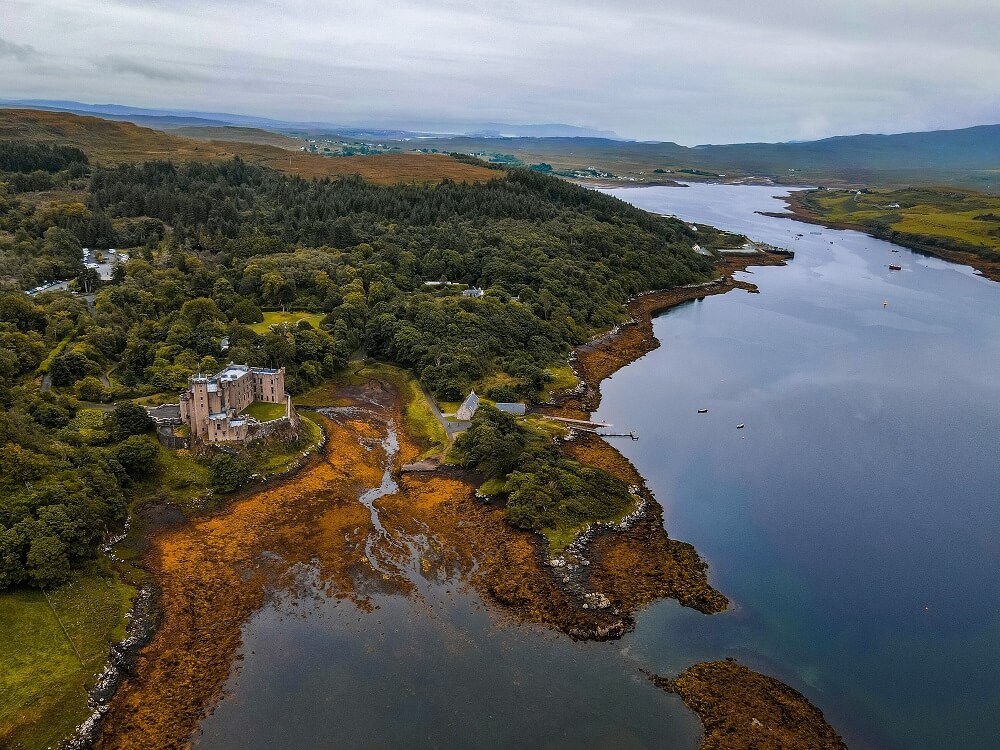
2. Explore Dunvegan Castle and Gardens
About Dunvegan Castle
Considered one the greatest Hebridean castles, Dunvegan Castle should be on your itinerary when visiting the north-west Isle of Skye.
The castle has been home to the Chiefs of Clan MacLeod for over 800 years, making it the oldest continuously occupied castle by the same family in Scotland. It was first built in the 13th century overlooking Loch Dunvegan and has been altered many times over the years. In the 19th century for example, the entire castle was remodeled in a mock-medieval style. Dunvegan Castle is part of the 41,000 acre MacLeod Estate.
Only the 27th Chief first opened the castle to the public in 1933. Back then you could only visit the castle 2 days a week. However, with the number of visitors each year now in the thousands, the picturesque castle is open every day.
You can read about useful information and things not to miss when visiting Dunvegan Castle below.
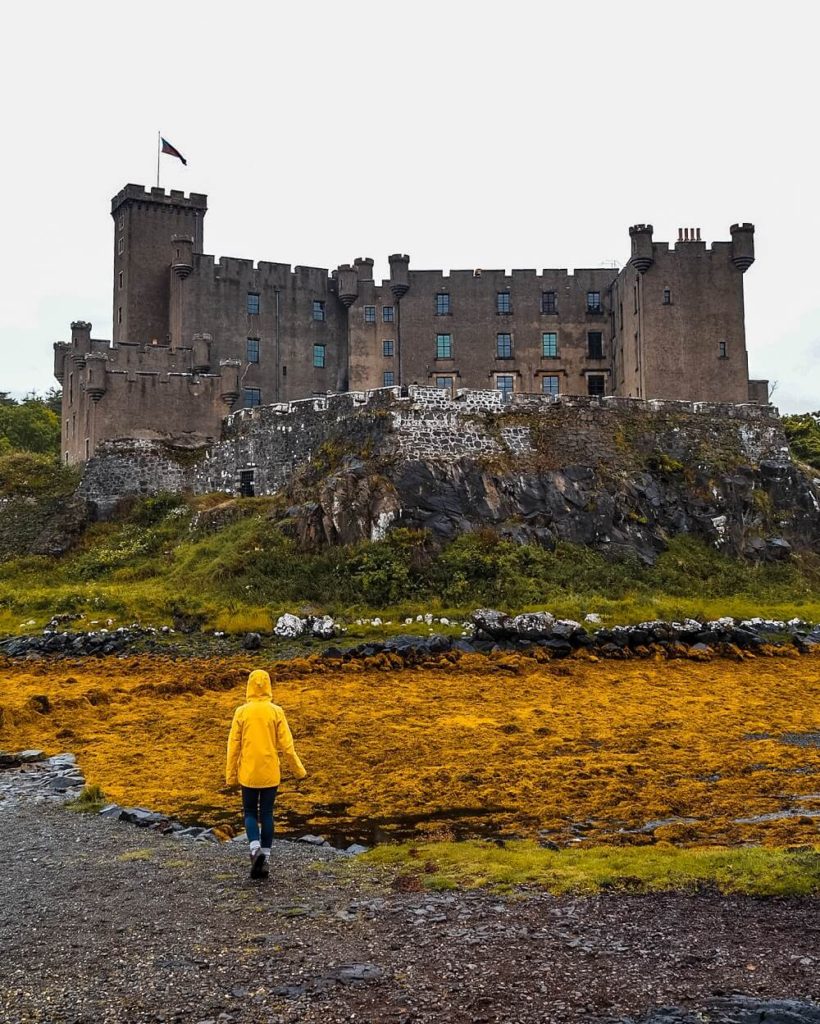
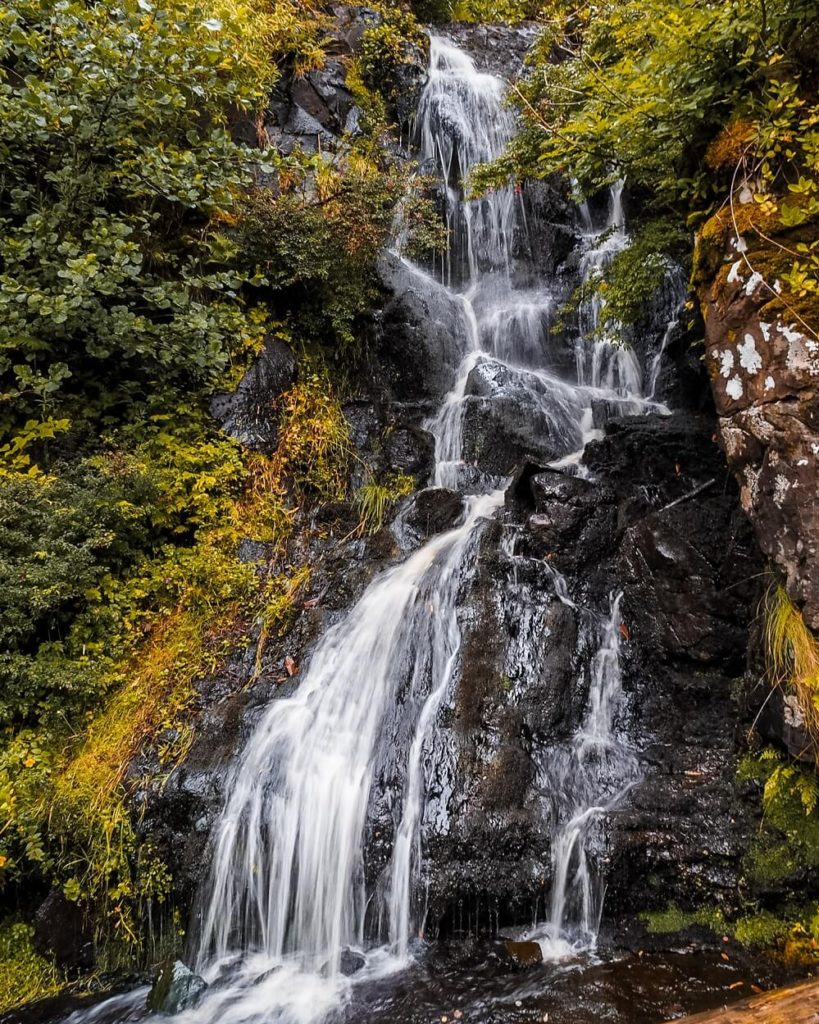
Useful Information Before You Visit Dunvegan Castle and Gardens
How to get there? – From Neist Point drive back along the road towards Dunvegan via the A884 and A863. The castle is located only about 1 mile to the north of Dunvegan.
Where to Park? – Parking is available just across from Dunvegan Castle (SatNav: IV55 8WE) free of charge. Please be careful when crossing the road.
Entry Fee to Dunvegan Castle and Gardens? – You can either buy a garden only ticket for £12 or buy a Castle & Garden Combo ticket for £14. I highly recommend paying for the combo ticket as it’s worth touring inside the castle and it’s only £2 extra. Please note that the castle is now closed until the 1st April 2022. You can check out up-to-date ticket and membership information by clicking here.
In addition, between the 1st April and 30th September you can book a 25 minute boat trip to see the Loch Dunvegan seal colony. It costs an additional £10 and you can only buy it if you buy a Castle & Gardens Combo ticket. More information about the seal trip can be found by clicking here.
Facilities – You can find toilet facilities and a café at the car park. Toilet facilities are also available within the castle gardens.
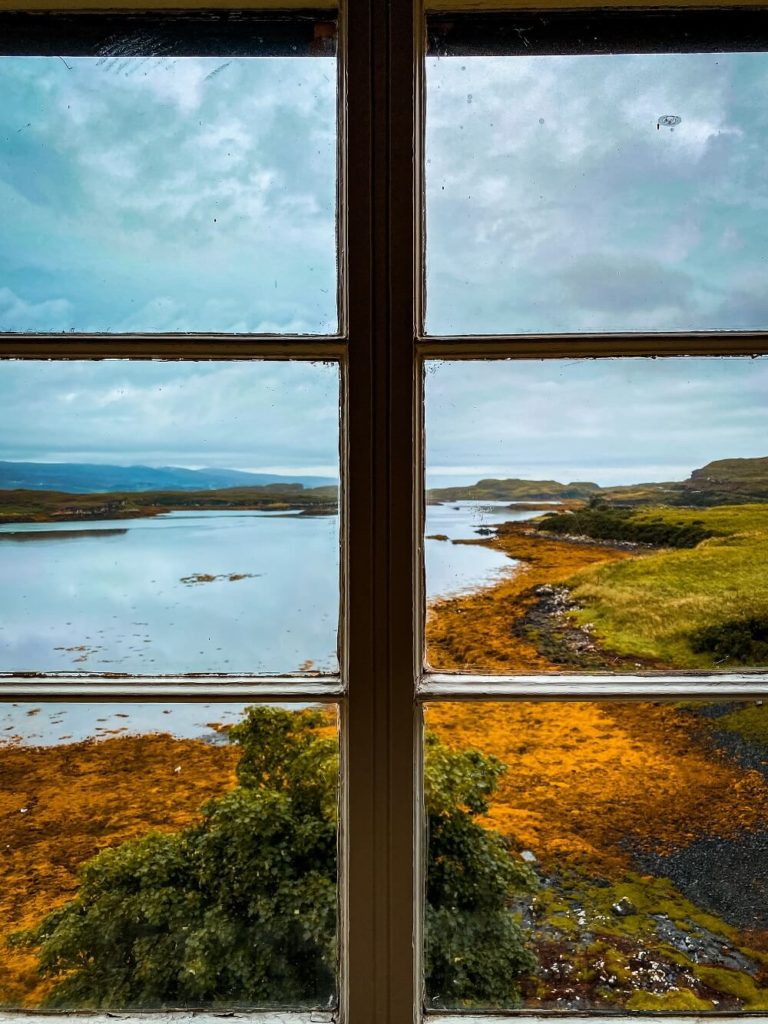
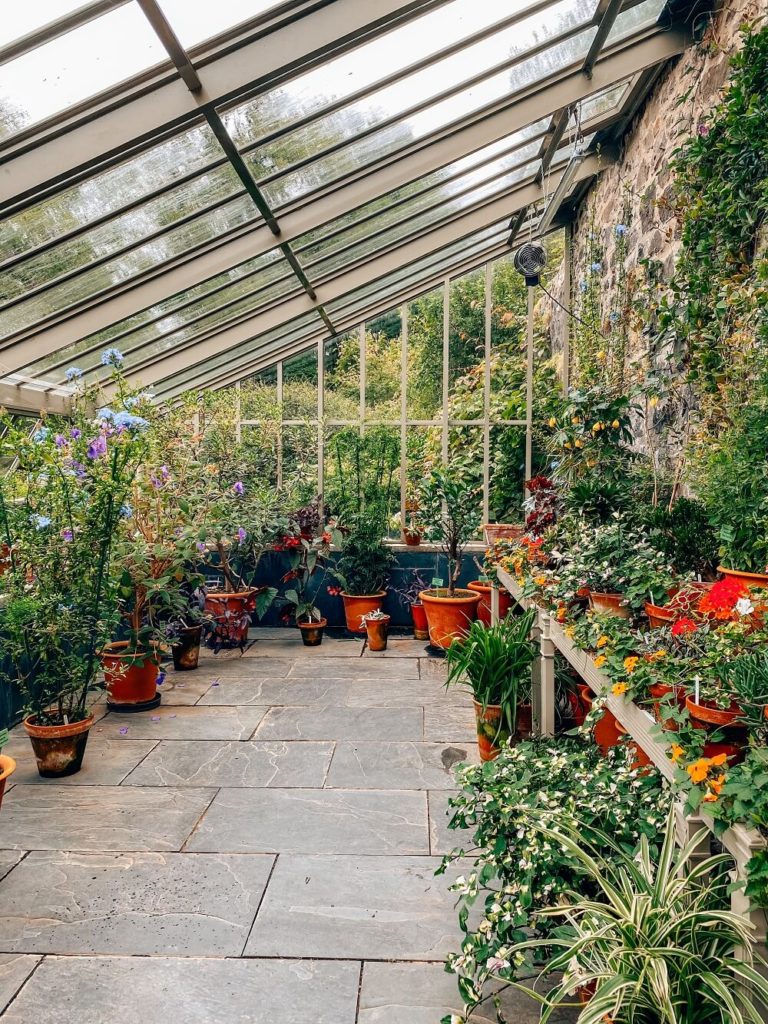
Things to Do at Dunvegan Castle and Gardens
1. Stroll Along the Wild Wood Trail and Admire the Rhododendrons
After entering the gardens I recommend taking a walk around the Wild Wood Trail and seeing the beautiful Rhododendrons if you’re visiting in the right season. Unfortunately the flowers were long gone by the time we visited but it was a great place to start exploring the grounds.
2. Explore Inside the Castle
Next, head inside the castle to explore its rooms and learn more about its history. As you walk through the rooms you’ll see plenty of beautiful oil paintings and treasures belonging to the clan.
Make sure not to miss seeing the famous Fairy Flag. According to legend, every time this sacred flag was unfurled in battle, Clan MacLeod would defeat their enemies.
Another treasure you should see is the Dunvegan Cup which is a wooden ceremonial cup from the Middle Ages. During your tour you’ll also come across Jacobite and Bonnie Prince Charlie relics.
3. Discover the Formal Gardens
After the tour in the castle make sure to explore the 5 acres of formal gardens. Large scale planting began after 1811 although archives show that they had a gardener in the early 18th century.
Today the formal gardens consist of the Water Garden, Round Garden, Woodland Garden and Walled Garden. The Water Garden features many beautiful waterfalls cascading into the stream that zig-zags through this section. The path will lead you to the Round Garden which has a parterre in the middle. From here the next area to explore should be the Walled Garden. It used to be the vegetable garden serving the castle. However, today you can find a wide range of plants and flowers there, including a lily pond, glass house and a Garden Museum.
With cascading waterfalls, lush plants and flowers the garden felt like a little oasis especially in comparison to the barren mountains and moorlands of Skye.
4. Go on a Seal Watching Boat Trip
If you visit between April and September you can also take a boat trip to see the Loch Dunvegan seal colony. The tour should last approximately 25 minutes and you’ll be able to get a closer view of the seals and other species of birds.
Unfortunately, due to restrictions the tours weren’t running at the time of our visit, therefore I have no personal experience to share with you.
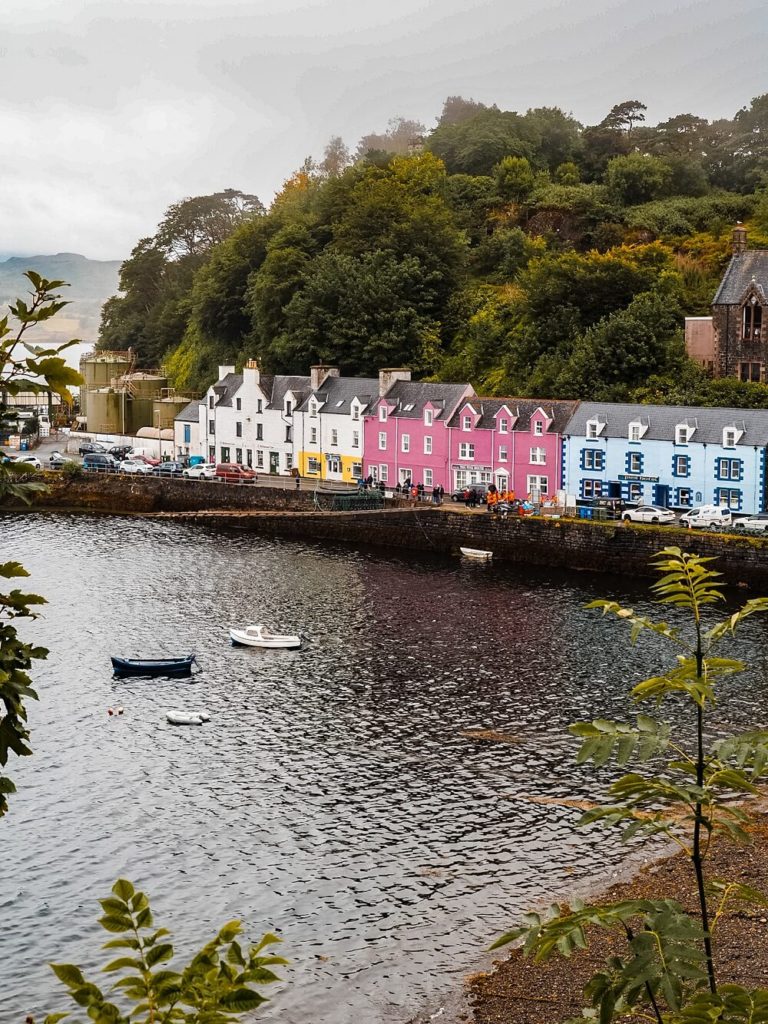
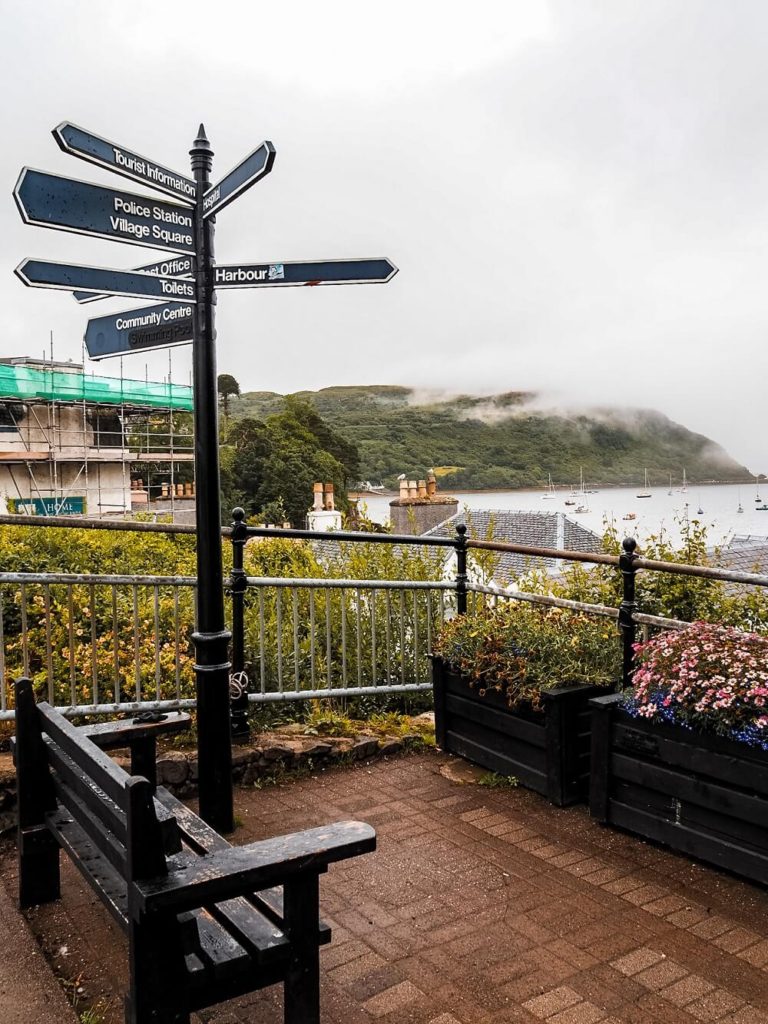
3. Visit Portree: The Capital of the Isle of Skye
Visiting the Isle of Skye wouldn’t be complete without exploring Portree, the largest town on the island. Many tourists who visit the Isle of Skye most likely base themselves in Portree as the location of the town provides a great base to explore the island.
The town has a harbour and a pier that was designed by Thomas Telford who also designed Sligachan Bridge. The iconic, colourful houses are also located in the harbour along Quay Street. The town is also surrounded by cliffs making Portree even more picturesque. You can climb up to the Lump which is a 19th century watchtower offering beautiful views of the harbour.
Other then being ideally located, Portree is also considered the cultural hub for the Isle of Skye. You can visit the town’s main attraction, the Aros Centre, a community cultural centre offering exhibitions, galleries, cinema, live music and workshops to its visitors.
Complete the Scorrybreac Circular Trail
If you love the outdoors, then I highly recommend completing the popular Scorrybreac circular trail. The trail is just over 5km (3 miles) long and you can start it from the centre of Portree. Head along the main road towards Scorrybreac Road. After crossing the bridge over the River Chracaig take the first left towards the Cuillin Hills Hotel. Walk all the way up that road until you see the footpath sign to the Scorrybreac trail on your right.
From here you just have to follow the path through the woodland first before you end up in an open field. Soon the path curves around and you’ll be walking through a more wooded area. If the weather conditions are right, you should soon be able to see the Isle of Raasay, Portree Harbour and Ben Tianavaig. The loch is also home to a number of salmon farms.
Please Note – Whilst the trail is well maintained for the most part, there are many sections where it’s super overgrown. In wet and rainy conditions wear waterproof shoes.
The trail will once again get better and wider as you slowly make your way down the hill. As you’re getting closer to Portree, you’ll have a closer view of the harbour and the colourful cottages alongside the bay. The trail should lead you back to the Cuillin Hills Hotel sign from where you can just follow the roads back into the centre of Portree.
Top Tip – Make sure that the hill isn’t covered in fog before you attempt this walk. At the time of our visit the fog was so thick that we couldn’t see much plus it was raining so we got very wet!
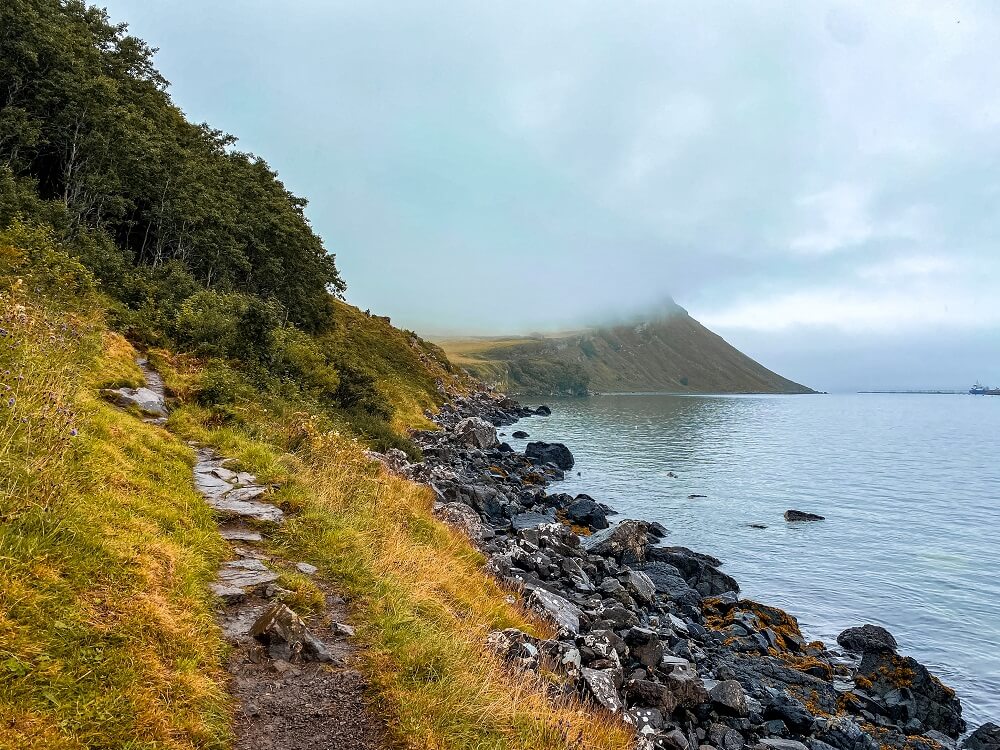
Additional Things to Do on the Isle of Skye
In order to see everything the Isle of Skye has to offer, you’ll need at least 3-days. So, if you’re planning your ultimate road trip, make sure to check out other places to visit during your trip:
7 Things to See in Central Isle of Skye – A 1-day road trip itinerary in Central Isle of Skye including a circular trail, a picturesque bridge, waterfalls, highlands cows and more. Click here to read it.
Trotternish Loop: 7 Places to Visit in North-East Isle of Skye – This itinerary is filled with walking trails through the most amazing landscapes combined with stunning views and waterfalls. In addition, if you’re lucky you might be able to find some actual dinosaur footprints. Click here to read it.
In the meantime, you can also browse for more Scotland content or more hiking trails in the UK and around the world in my Hiking Adventures Series.
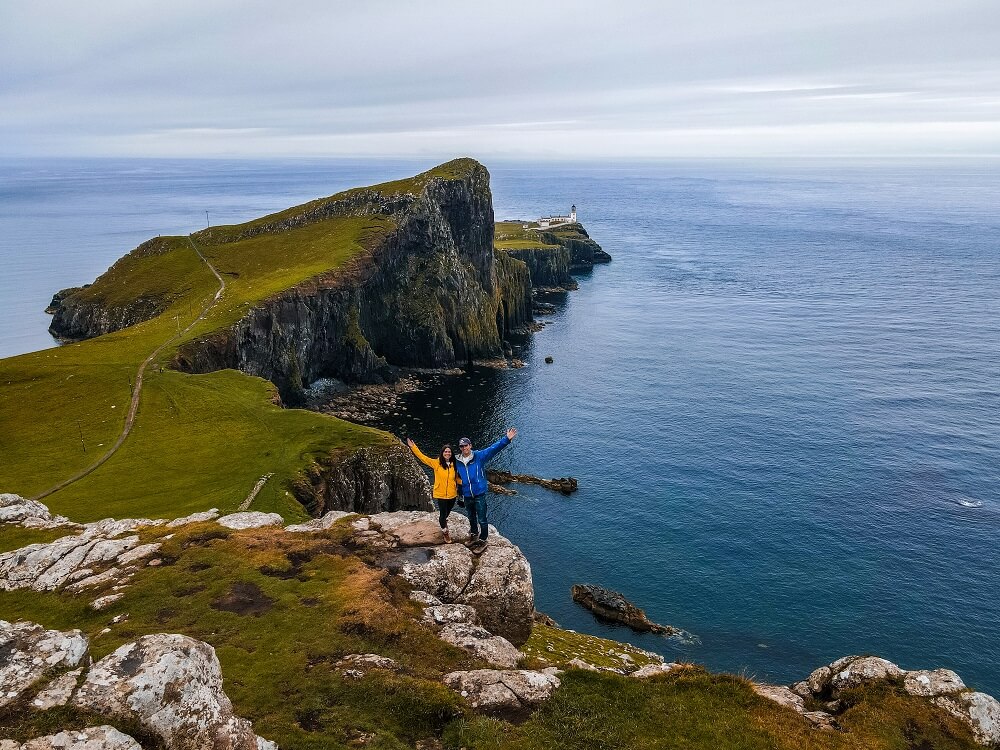
Final Thoughts on the North-West Isle of Skye
Whilst the north-west of the Isle of Skye might not seem as mind-blowing as the Trotternish Peninsula, I think it would be a huge mistake not to explore the beautiful places that it has to offer.
We weren’t the luckiest with the weather conditions, especially when compared to the previous two days we spent exploring Skye. However, we still managed to fill the day with stunning landscapes and interesting historical sites.
Have you ever explored the north-west Isle of Skye before? If so, tell me about your experience and how much of the area you managed to explore? Let me know in the comments below.
Now, let your adventure begin,

Our Top Travel Resources
Accommodation: For hotels we always use Booking.com and Hostelworld for hostels. We also book longer stays on Airbnb or Vrbo.
Flights: To find the best flight prices we always check Skyscanner, Google Flights or WayAway. Then we also check the airlines’ websites too for comparison.
Car Rentals: We use Discover Cars when we want to rent a car as it compares local, national and international companies.
Activities: If we book organised tours we always check either GetYourGuide or Viator.
Foreign Currency: Whenever we can we prefer to pay in local currency and for that we always use our Wise card. We can easily withdraw money from the ATM or pay by card at most shops and restaurants.
Travel Insurance: We never go anywhere without travel insurance. You never know what will happen on your trip, so good travel insurance like SafetyWing can protect you in case of injury, illness, theft and cancellations.
eSIM and VPN: To get data abroad we use Airalo which is an app that allows you to download a prepaid eSIM to your phone in over 190 countries. Make sure to have a VPN to avoid hackers accessing your personal data when using public WIFI. We use Surfshark which is the only VPN that offers one account on unlimited devices.
Remember…It all starts with a Pin…
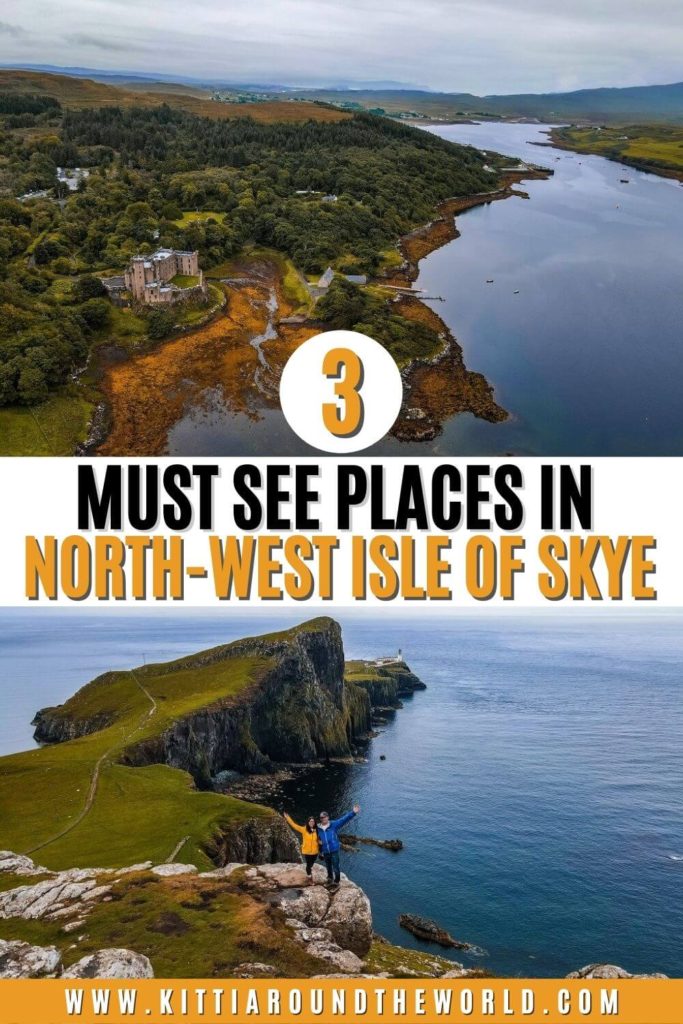
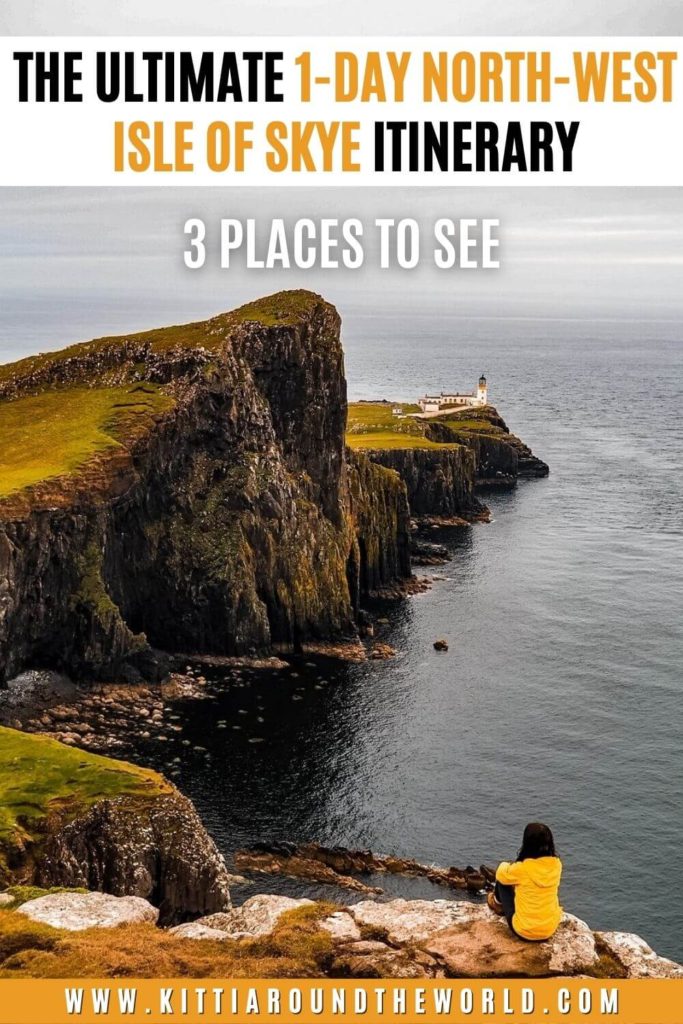

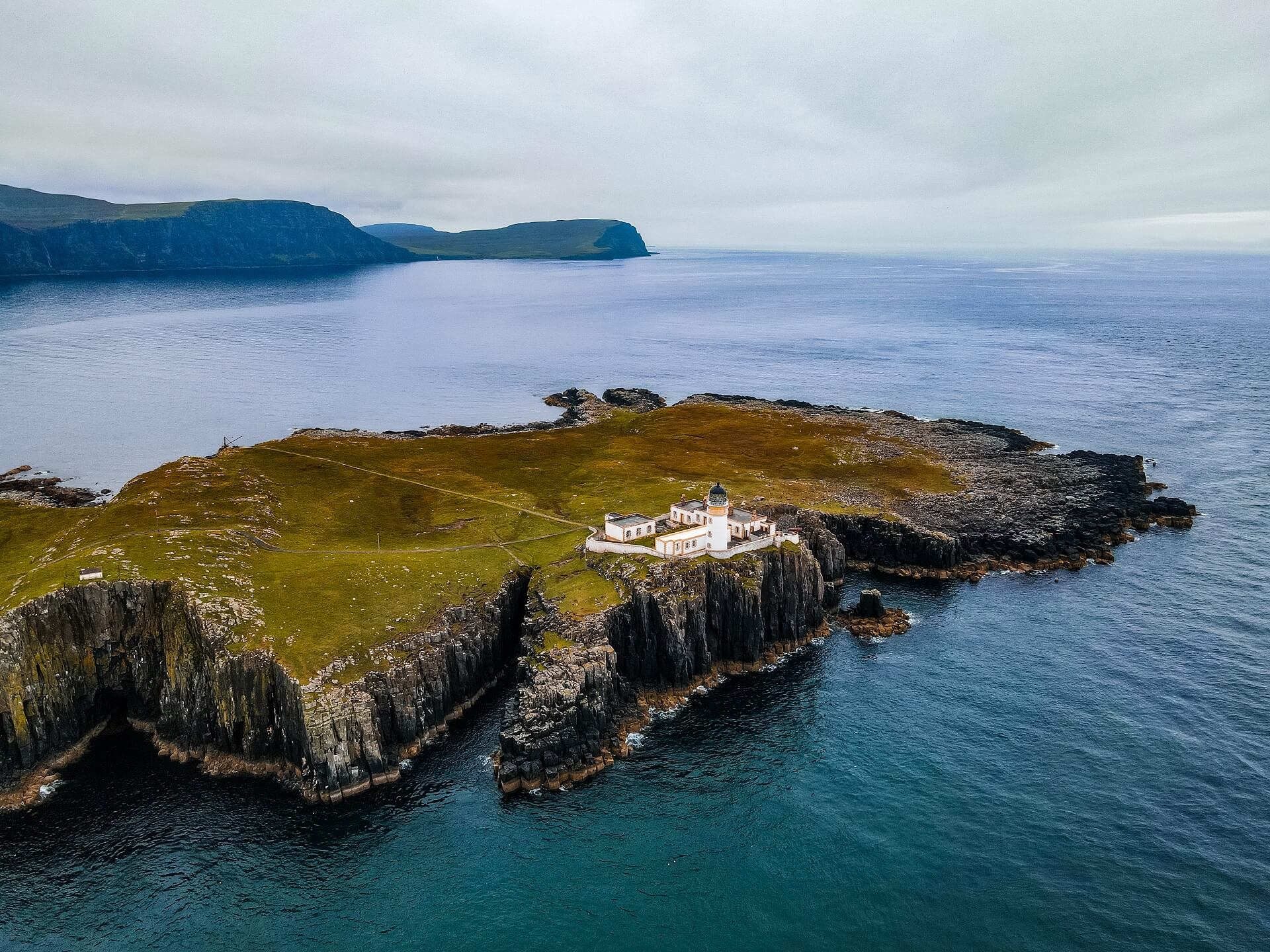
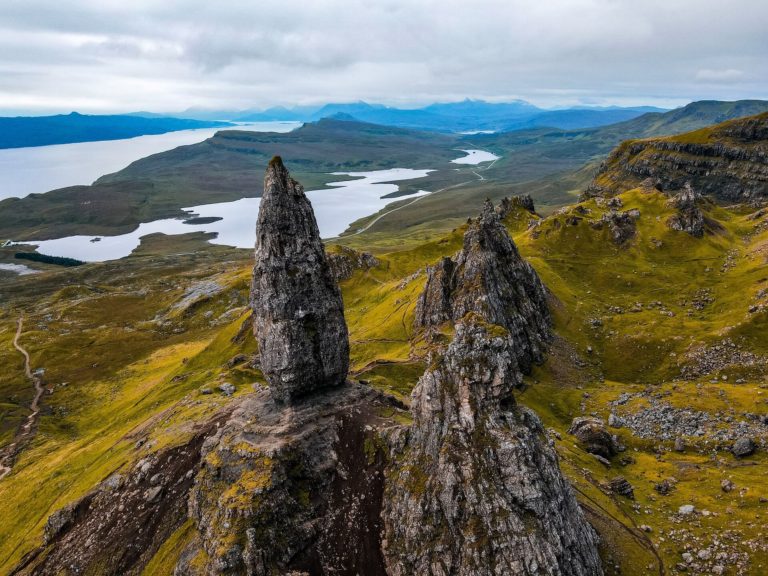
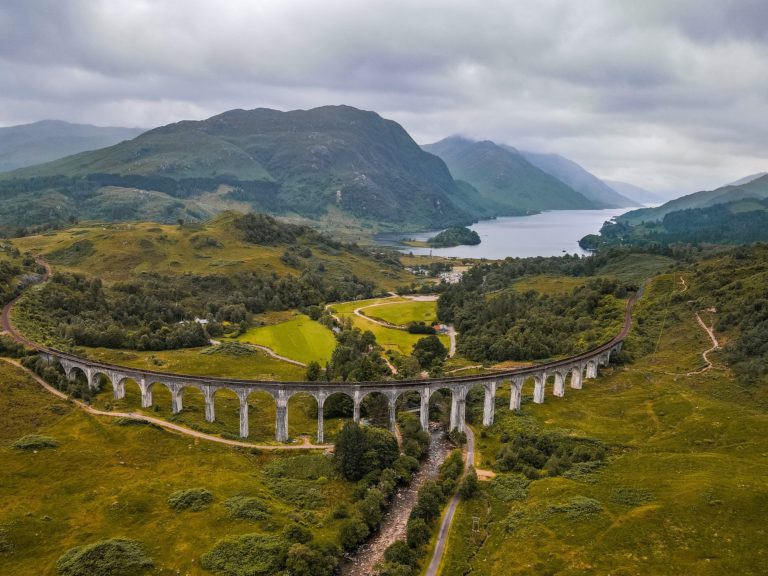
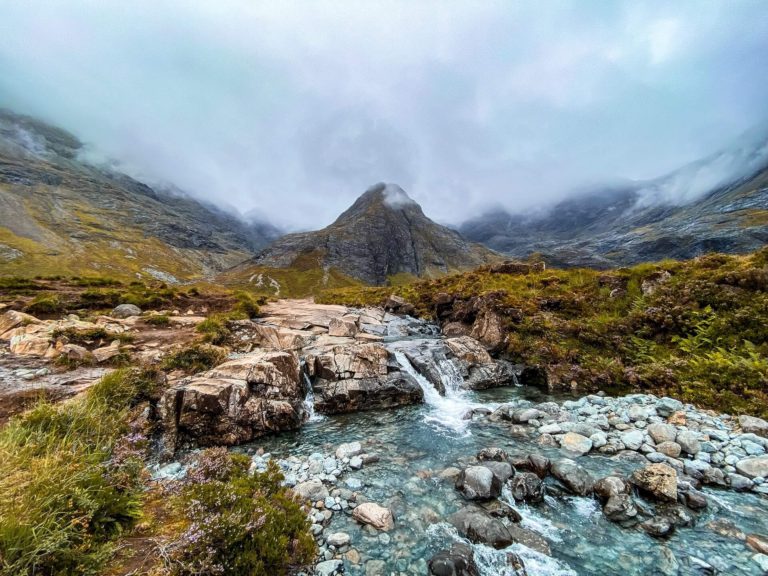
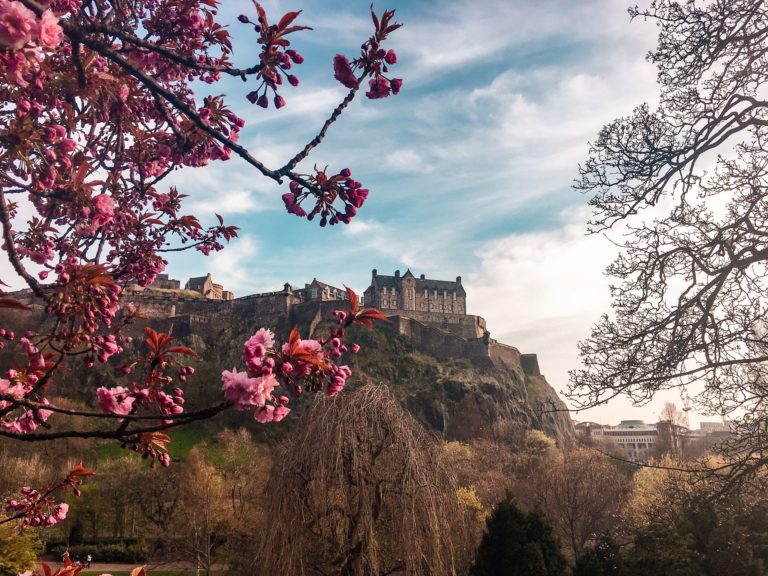

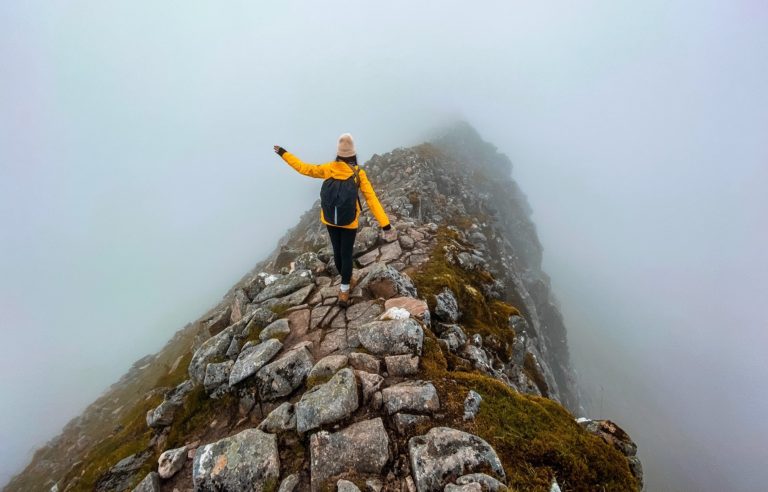
Another great guide to this amazing island. So much to see and do. Really hope to get back there sometime!
Thank you Karan, I’m glad you enjoyed this guide too.
All of these spots look so charming! I really must visit the Isle of Skye! I love how colourful the buildings are in Portree Harbour! Dunvegan Castle looks incredible too! Thanks for the great guide!
Thank you Hannah. Yes Portree is so charming and you won’t regret a visit to Dunvegan Castle either.
This looks like such an incredible holiday! Castles, waterfalls and fun hikes – I would love to walk through the gorgeous green scenery. I would love to explore the whole of the Isle of Skye, but the north-west looks fab, even in slightly soggy weather.
Thank you Josy. Yes I think spending a few days on the Isle of Skye is a must to be able to do some hikes and see its main sights. I hope you can visit soon.
I keep reading so much about the Isle of Skye. I can certainly see why a 3 day road trip would let us see the gems there are to discover in this lovely spot. I love your fun and top tips to make the best of the stops. A great guide to keep for planning a visit. I would hate to miss anything!
Thank you so much Linda. Yes a minimum of 3 days is needed for Skye but I could’ve easily spent longer. Hope my guides will be helpful to plan your trip.
The building around the Neist Point lighthouse looks very interesting (and large) for a lighthouse keepers dwelling. Dunvegan Castle looks very majestic.
Yes I was also very surprised just how massive the lighthouse building was. It’s very beautiful regardless. Also I’m sure you won’t regret a visit to Dunvegan Castle.
What a great guide and how fantastic the north west of the island looks. The lighthouse looks magnificent! I’d love to visit the Isle of Skye some time!
Thank you Tam. These places are so beautiful and I’m sure you would also enjoy your visit.
The Isle of Skye is a dream destination for me! Coming from someone who lives in the desert, all the greenery seems absolutely fabulous. I would love to spend some time hiking and also check out the lighthouse!
I bet there’s a massive difference between living in a desert and living in Skye. I really hope you can visit and experience all the island has to offer.
I loved driving around this part of the Isle of Skye, the only place we didn’t make it to was the lighthouse because our electric car wouldn’t last that long. Can’t wait to go back!
So glad to hear that you visited this area of Skye. Oh I can only imagine the struggle going to such remote areas with an electric car. Hope you can return in the future with a different one.
Great guide! I really want to visit Scotland
Thank you Yasmine. I’m sure you would enjoy your visit.